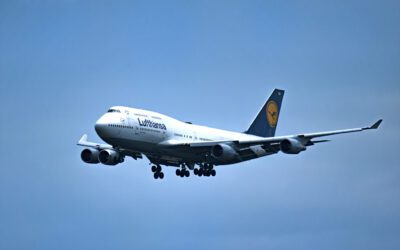Last week, I wrote about air travelers preventing their checked luggage from being lost, missing, stolen or delayed. Unfortunately, while my suggestions can help, in the world of travel, nothing’s a sure thing. I’ve experienced delayed luggage myself, more than once.
A number of years ago, my wife and I purchased a Mediterranean cruise. We flew to Atlanta to catch our flight to Barcelona, our port of embarkation. Due to bad weather, our first flight was delayed several hours. We arrived in Atlanta about an hour after our flight to Barcelona departed.
Fortunately, upon arrival, we were handed new boarding passes for our revised itinerary. We flew through Paris to Barcelona. We were in the air to Paris less than a half hour after arriving in Atlanta. Expectedly, our luggage didn’t make it on our flight.
We reported the missing bags at El Prat Airport, then left for our hotel. Delta thought the bags were in Paris. They weren’t. It took a dozen calls and help from Celebrity Cruises, but we finally got Delta to look for our bags in Atlanta. They found them immediately. The bags were waiting for us in our hotel room four days after our arrival, the night before our cruise was to leave.
It turns out that 51 percent of lost luggage is due to transfer-related incidents, which is what we encountered that day. It’s caused by damaged or missing airline luggage routing tags, airport baggage distribution mishaps, and too little time between connecting flights to successfully transfer luggage.
So, if your luggage is lost, missing, stolen or damaged, what do you do? You can take a few commonsense steps to help you with your claim to the airline and baggage recovery.
• Before leaving, photograph each bag’s exterior, interior and contents. It can help the airline find your bag if missing, and with your claim. Make sure you know the brand and model of your luggage. That can help the airline locate your bags, too. Some more expensive luggage has built-in identifiers. Keep a record of them and put it in your claim.
• Be prepared to continue your trip without the belongings in your checked luggage, at least for the short term. I pack a complete change of clothes, toilet articles and my medications in my carry-on.
• Make sure you have at least one ID tag inside your luggage to help in identifying it once recovered.
• If you’re flying in the US, use a TSA-approved lock with telltale indicator. If you’re flying internationally, consider using “prenumbered safety control seals.” In each case, you can immediately tell if the lock has been opened, or the seal broken, which indicates someone entered your luggage. If they have, open the bag and examine its contents prior to leaving the airport. Make a claim to the airline, if necessary.
According to your country of origin, and whether you’re flying domestically or internationally, the limit of airline liability for your checked luggage and contents varies dramatically. It’s often considerably lower than their actual value. It’s calculated on depreciated, not replacement, cost value.
For example, if you’re flying in the US on a domestic flight, airlines have a $3,500 limit of luggage liability per passenger. If you’re flying internationally, the limit is typically much lower. If your flight is covered by the Montreal Convention the limit is 1,131 SDR (Special Drawing Rights), so the liability limit would currently be about $1,595. If your flight is under the Warsaw Convention, it depends on the weight of your luggage. For a 50-pound bag, the liability would be about $454.
When flying internationally I always purchase insurance covering my luggage.
• Even if your airline permits extra time to submit a claim for missing, stolen or damaged luggage and contents, take the time to put in your claim at the airport, immediately after discovering your loss, if for no other reason than to start their process to locate your bag(s) if missing. Don’t go to your hotel before submitting your claim. If you remember only one suggestion from this column, remember this one.
Don’t leave the airport without your claim number, and retain at least a copy of the airline luggage stubs you received when you checked your luggage.
• If you have travel insurance covering lost, missing, delayed or damaged luggage and contents, contact your insurance company as soon as possible.
• Before leaving, if you’ve purchased insurance, check your policy to see what it precisely covers. Your homeowners/renters policy might help, too.
• Document everything carefully which might be part of your claim. Make sure you retain all your receipts for purchases to replace missing or delayed items, to prove your expenses. You may not be fully reimbursed for clothing purchases, as it’s assumed you’ll wear them after you return home.
• If your bag is delayed, most airlines will cover the cost of essentials like toiletries or a change of clothes. Check with your airline to determine precisely what they’ll do.
Image: American Airlines A319 landing at Philadelphia International Airport, Copyright © 2015 NSL Photography. All Rights Reserved.
After many years working in corporate America as a chemical engineer, executive and eventually CFO of a multinational manufacturer, Ned founded a tech consulting company and later restarted NSL Photography, his photography business. Before entering the corporate world, Ned worked as a Public Health Engineer for the Philadelphia Department of Public Health. As a well known corporate, travel and wildlife photographer, Ned travels the world writing about travel and photography, as well as running photography workshops, seminars and photowalks. Visit Ned’s Photography Blog and Galleries.



